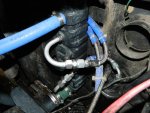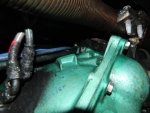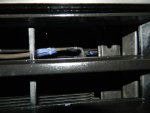I'm glad it's a free enough country (for now) that we call all do it the way we choose, and I'm glad that there have always been a lot of people who do NOT think like you.
If everybody thought like you, we'd all still be living in caves. "Ah bin living in caves fer forty years, and it's good enough for me!"
Well, I paid attention in 5th and 7th grade science class, where basic thermodynamics and fluid dynamics were covered, so I know how heat flows, and I know how fluids flow. Of course, they didn't call it by those fancy names, but that's what it was. See, I never bought that stupid idea that I didn't need to pay attention to something because "I'll never need to know this stuff.", as if making a living with it were the only value in learning something.
And since my Dad worked in the Canadian Army on cold-weather vehicle research during WWII, I have some second-hand understanding of how radically different things are up there, and what effect that kind of cold has on vehicles. It may be only second-hand understanding, but that's really all any person of normal intelligence needs to recognize that different conditions call for different approaches.
And since I have mastered the very difficult art of
typing questions into a search engine, I know that
Homer Alaska, where the OP lives, is several hundred miles closer to the Arctic Circle than
where my Dad worked, so it's probably colder.
And since I have worked on my own vehicles for about 40 years now I long ago got over the
silly idea that manufacturers always design things the best possible way. Sometimes, what they do is downright stupid, really.
Of course, being a man of practical experience, I know that there's no such thing as ONE BEST WAY, in the first place.
Oh, and I can read, and do read, so I know that things change, and that technology advances, and ..... this may be hard to believe for some of you, but really, it's true .... we really do learn better ways to do things, which is why transmissions now have external filters [I've been running transmissions for 40 years and never needed no external filter!] and they do have thermostats to keep them from running too cool, which won't BREAK them, but it will shorten their lives.
Oh, and I've never been a slave to the "We've always done it this way, no need to change now!" mentality.
As I write this, I'm sitting in a comfortable living room in a short sleeved shirt, and it's 14 degrees outside. A couple of years ago, it would have been cold in here, and the other end of the house, where the wood stove is located, would have been uncomfortably hot. It's not any more, by the way. The reason it's comfortable down there and here and we are burning less wood to be more comfortable is because I understand 5th and 7th grade level science, and I finally decided to ignore the advice of many HVAC professionals. They all said it wouldn't work, and hey, they should know, right? But I finally decided to ignore them and I installed some ducts in my attic, and a furnace blower, and now I take warm air from the hot end and bring it to the cool end, and no, unlike what the "experts" said, I do NOT lose all the heat in the attic, and in fact, the living room stays a few degrees
warmer than the other end down by the wood stove.
And all because I paid attention in 5th and 7th grade, and understand the BASICS.
So, does that answer your question? Have you got anything better to add to this discussion than, "We've always done it this way!", or "experts know best!"?
Frankly, in my view,
that contribution isn't worth the electrons it takes to post it.







